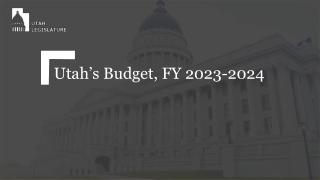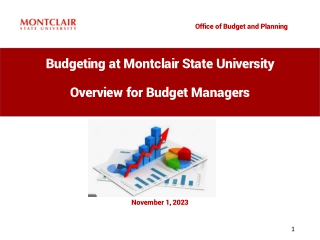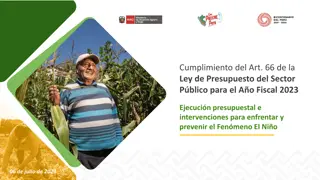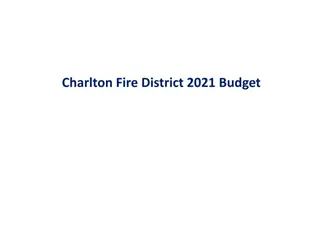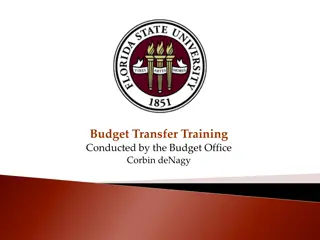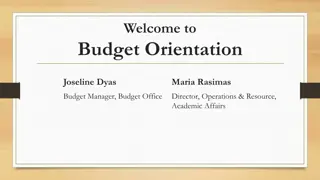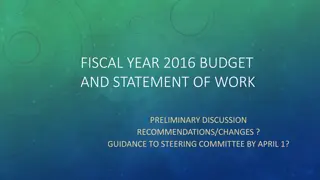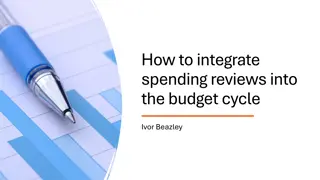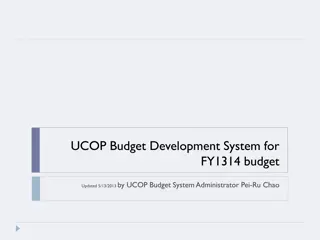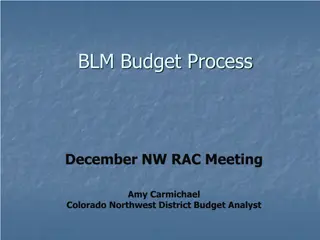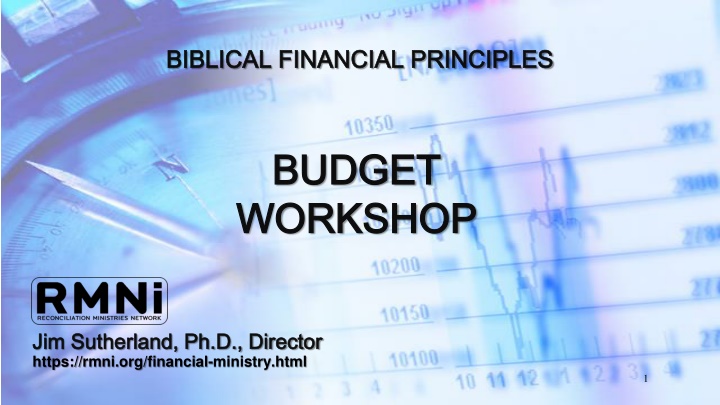
Practical Financial Guidance Based on Biblical Principles
Explore practical financial advice rooted in Biblical principles, including budgeting tips, planning with surplus, and steps to create a solid financial plan. Discover the importance of contentment, wisdom in spending, and aligning your finances with God's provision.
Download Presentation

Please find below an Image/Link to download the presentation.
The content on the website is provided AS IS for your information and personal use only. It may not be sold, licensed, or shared on other websites without obtaining consent from the author. If you encounter any issues during the download, it is possible that the publisher has removed the file from their server.
You are allowed to download the files provided on this website for personal or commercial use, subject to the condition that they are used lawfully. All files are the property of their respective owners.
The content on the website is provided AS IS for your information and personal use only. It may not be sold, licensed, or shared on other websites without obtaining consent from the author.
E N D
Presentation Transcript
BIBLICAL FINANCIAL PRINCIPLES BIBLICAL FINANCIAL PRINCIPLES BUDGET BUDGET WORKSHOP WORKSHOP Jim Sutherland, Ph.D., Director Jim Sutherland, Ph.D., Director https://rmni.org/financial-ministry.html 1
PLANNING WITH YOUR SURPLUS God s plans never fail (Is. 14:27; Ps. 33:11), so we need to tryto understand God s will (Eph. 5:17; Jer. 9:23-24). Planning is spiritual (Prov. 12:5; 16:3) Get good counsel (Prov. 12:15; 13:10) God can will in our will (Phil. 2:12-13) What has God given youfaith to believe Him for ? Bill Gothard Try constructing a financial timeline, using 70 years.
TWO APPROACHES TO SPENDING 1. From a false assumption of what ought to be able to spend. I owe it to myself! I deserve to be able to . a deductive approach 2. From actual income/provision From within the circle of God s provision an inductive approach
Income isnt the major issue in budgeting Here is a list of the nations with the highest percentage of consumers who have no spare cash: 1 America (22%) 1 Portugal (22%) 3 Canada (19%) 4 United Kingdom (17%) 5 France (16%) 6 Netherlands (15%) ACNielson Online Consumer Confidence Survey Global Survey, 1/11/2005 But godliness with contentment is great gain--1 Timothy 6:6
HOW TO BUDGET - 7 STEPS - 1. Pray for wisdom (James 1:5) and for self-control (Galatians 5:23). Habitual overspending is a spiritual issue. 2. BEFORE spending, plan MONTHLY expenses and LONG TERM GOALS (greater than 1 year, requiring savings). 3. Record DAILY expenses in a columnar ledger or software program keep a running total in each expense category (using the ledger or on the outside of a cash envelope).
HOW TO BUDGET - 7 STEPS - 4. At month s end, TOTAL expenses in each category and compare with target figures, and adjust for next month, if needed. 5. Compare ALL expenses and with ALL income. 6. Move any surplus to savings, earmarking it for a particular need. 7. Deduct any shortfall from your next pay before spending it.
Download this and other helpful financial forms at https://rmni.org/financial-ministry.html Budget busters At www.crown.org you ll find additional budgeting aids
Typical Budget Problems -1 Spending over 40% of net spendable income (gross income, less taxes and giving) for housing & utilities High cell phone bills, buying expensive smart phones over time (which is debt) Food category out-of-control, including eating out Over-recreating, including cable/streaming services, trips, fitness clubs, and movies (tip: put cash into envelopes and don t spend until you have sufficient money in the envelope) Paying too much for auto insurance & having inadequate life insurance
Typical Budget Problems -2 High debt load and failure to even list and total all debt including interest rates (tip: Debt List form can be found at https://rmni.org/financial-ministry.html) Little or no savings failure to plan for future needs and goals Miscellaneous spending out-of-control Unable to pay for private schooling Putting too much or too little into retirement investments
Typical Budget Problems -3 Too little giving to Christian causes & too much giving to relatives Inadequate or inordinate tax deductions High cost of health insurance consider a good Christian health cooperative: see www.samaritanministries.org
Budget Balancing How do Americans try to balance their budgets? Cutting down on take-away meals 66% Saving on gas and electricity 61% Cutting back on out-of-home entertainment 60% Spend less on new clothes 54% Not driving as much 47% Switching to less expensive grocery brands 42% ACNielson Online Consumer Confidence Survey Global Survey, 11/2005
6 LEVELS OF GIVING 1. Giving little or nothing. Among Baby-busters (18- 35), only half gave anything to the church in 2002.1 2. Inadequate giving. Giving less than 10%. 3. Obedient giving. Giving a tithe. 4. Giving beyond obedience--beyond the tithe. 5. Giving generously, being willing to share (2 Cor. 9:6). 6. Surpassing generosity. Giving out of God s bounty, becoming a conduit of His blessing (2 Cor. 9:8,10- 11). In Larry Burkett s terms, we become a pipeline, instead of a pail. 1 George Barna, Americans Were More Generous in 2001 Than in 2000, 4/9/02, accessed at www.barna.org on 2/7/03
BUDGETING TIPS At year s end, total all expenses for each category and divide by the number of months included, to refine your monthly budget figures. You may have to adjust your budget each month, especially if your income varies. Using a spread-sheet helps. Find an MS Excel template here: https://rmni.org/financial-ministry.html
More BUDGETING TIPS Expect UNEXPECTED expenses. Satan will try to discourage you. This is the reason for an emergency fund. The budget may take at least 6 months to begin to work smoothly. If you use software (e.g., Quicken account (for checks & debit cards) AND a cash account, then combine them when running reports. You may also need a credit card account (you pay them off each month, right?), and again, combine accounts for a report. Using software makes tax season fairly simple. ) use both a checking
FINANCIAL STATEMENT As of_________________ ASSETS ___________________ $____________ ___________________ $___________ ___________________ ____________ ___________________ ___________ ___________________ ____________ ___________________ ___________ ___________________ ____________ ___________________ ___________ ___________________ ____________ ___________________ ___________ ___________________ ____________ ___________________ ___________ Total liquid assets $____________ TOTAL LIABILITIES$___________ Invested Assets[3] ___________________ $____________ ___________________ ____________ ___________________ ____________ ___________________ ____________ NET WORTH $__________ ___________________ ____________ (Total Assets less Total Liabilities) ___________________ ____________ Total invested $____________ Use Assets[4] ___________________ $____________ TOTAL LIABILITIES ___________________ ____________ AND NET WORTH $___________ ___________________ ____________ ___________________ ____________ ___________________ ____________ ___________________ ____________ Total use assets $____________ TOTAL ASSETS $____________ Liquid Assets[1] LIABILITIES[2] Do your assets exceed your liabilities? Use this guide to determine the answer. For a download of this form and more Christian stewardship information, see https://rmni.org/financial-ministry.html [1] Cash, Savings Accounts, Checking Accounts [2] Outstanding Real Estate Loans, Credit Cards, Auto Loans, Personal Loans [3] IRAs, TSAs, 401ks, Investment, Real Estate, CDs, Antiques presented at fair market value. [4] Residence, Autos, Personal belongings presented at fair market value. END

